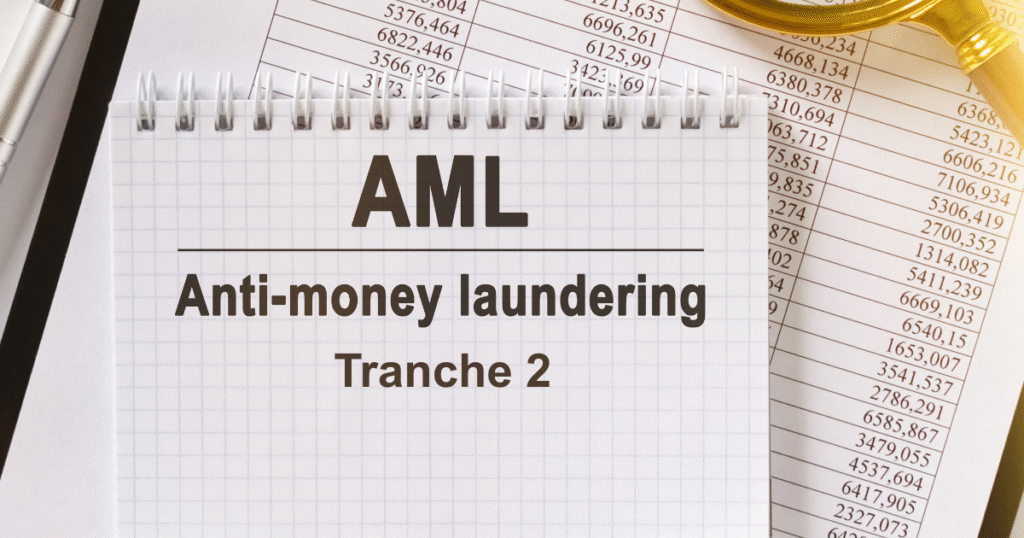The Australian legal industry is about to experience one of the biggest compliance changes in decades with the introduction of AML/CTF Tranche 2 for Law Firms , law firms across the country will soon need to follow the same anti-money laundering rules that banks and financial institutions already comply with.
If you’re a lawyer, conveyancer, or law firm manager, here’s what you need to know — and how to prepare.
What Is AML/CTF Tranche 2?
AML/CTF Tranche 2 is the next phase of Australia’s Anti-Money Laundering and Counter-Terrorism Financing reforms.
Up until now, the AML/CTF Act mainly applied to banks, remittance providers, and casinos. But under Tranche 2, a wider range of professions — including law firms, accountants, and real estate agents — will be brought into the regime.
This expansion is designed to close loopholes that criminals have used to move or hide money through unregulated professional services.
In short, the government wants to make sure that everyone who handles client funds or large financial transactions plays a part in keeping Australia’s economy clean and transparent.
(If you’re new to this topic, check out our main article: “What is AML/CTF Tranche 2?” for a full overview.)
Get Your Free Initial Consultation
Request a Free Consultation with one of our experienced AML Lawyers today.
Why Are Law Firms Now Included?
Lawyers often help clients manage money, buy property, set up companies, and run trust accounts. Unfortunately, these legitimate services can also be used — intentionally or not — to launder money or hide illegal funds.
For example:
- A criminal might use a law firm’s trust account to move large sums of cash.
- Someone could ask a lawyer to create a company or trust structure that hides the true owner of assets.
- A property purchase could be arranged through a legal practice using suspicious funds.
Under AML/CTF Tranche 2, these scenarios must now be monitored and reported. By bringing law firms into scope, the government aims to stop criminals from misusing the legal system.
For law firms, this means adopting new compliance habits. While it may seem like extra work, these changes protect your firm from reputational damage, legal penalties, and being unknowingly involved in criminal activity.
Key AML Obligations for Law Firms
From 1 July 2026, law firms that offer certain financial or transactional services will officially become “reporting entities” under the AML/CTF Act.
Here’s what that means in practice:
1. Enrol with AUSTRAC
All law firms covered by Tranche 2 must enrol with AUSTRAC, the government body that oversees AML/CTF compliance.
Enrolment opens 31 March 2026, and it’s your first official step toward compliance. The process involves registering your firm’s details and acknowledging your AML obligations.
2. Know Your Client (KYC)
Before starting work on a regulated matter, you must verify your client’s identity — just like banks do.
This is called Customer Due Diligence (CDD). You’ll need to:
- Confirm the client’s identity with ID documents.
- Identify any beneficial owners if the client is a company or trust.
- Understand the purpose and nature of the transaction.
If something doesn’t add up — for example, a client avoids sharing details or funds seem suspicious — you’ll need to dig deeper through Enhanced Due Diligence (EDD).
KYC isn’t just a one-time check. Firms must monitor clients over time and refresh information if risks change.
3. Report Suspicious Activity
If you see something that looks suspicious, you must report it to AUSTRAC through a Suspicious Matter Report (SMR).
Examples include:
- A client making unusual cash payments.
- Transactions that don’t fit their normal behaviour.
- Requests to move money through your trust account without a clear reason.
You might also need to report certain large cash transactions (typically over $10,000). The goal is to alert authorities before illegal money flows further through the system.
4. Keep Records
Law firms must keep detailed records of:
- Client identification and verification steps.
- Financial transactions.
- Any reports made to AUSTRAC.
- Your firm’s AML risk assessments and procedures.
These records must be stored securely for at least seven years. Keeping good records not only meets your obligations but also protects your firm in case of audits or disputes.
5. Create an AML/CTF Program
Each firm will need a written AML/CTF Program that outlines how you manage financial crime risks.
This document should cover:
- Your internal risk assessment.
- KYC and reporting procedures.
- Staff training and responsibilities.
- Record-keeping and monitoring systems.
Think of it as your firm’s playbook for AML compliance. The size and complexity of your program will depend on your firm’s structure and the services you offer.
Get Your Free Initial Consultation
Request a Free Consultation with one of our experienced AML Lawyers today.
6. Staff Training and Awareness
Compliance works best when your whole team understands it. Train your lawyers, conveyancers, and admin staff to:
- Spot red flags for suspicious behaviour.
- Follow proper onboarding and reporting steps.
- Handle client information securely.
A well-trained team helps ensure that AML/CTF obligations become part of your firm’s everyday routine, not an afterthought.
What About Client Confidentiality?
One of the biggest questions from the legal community has been: “What about client confidentiality?”
The good news is that legal professional privilege is protected under the AML/CTF Tranche 2 reforms.
This means you will never have to disclose privileged communications or legal advice when complying with AML/CTF laws. You can still file a suspicious matter report without revealing confidential client advice.
In other words, you can meet your compliance obligations while maintaining your professional duties to clients — both can coexist.
When Do Law Firms Need to Comply?
There are two key dates to remember:
- 31 March 2026: AUSTRAC enrolment opens for law firms.
- 1 July 2026: The Tranche 2 obligations officially begin.
From July 2026, law firms must have their AML/CTF programs in place, staff trained, and systems ready to report and monitor transactions.
Now is the perfect time to start preparing. Waiting until the last minute could put your firm at risk of non-compliance and penalties.
How Law Firms Can Start Preparing Now
Here are some simple ways to get your firm ready early:
- Learn about Tranche 2: Make sure partners and staff understand what’s changing.
- Review your services: Identify which legal services will be regulated (e.g. trust accounts, property, company formation).
- Start building your AML framework: Outline how you’ll do KYC, report suspicious activity, and keep records.
- Update client onboarding forms: Add ID verification and risk assessment steps.
- Stay informed: Follow updates from AUSTRAC and industry bodies like the Law Council of Australia.
Early preparation will make the transition smoother and give your firm a competitive edge by showing clients you take compliance seriously.
The Bigger Picture
AML/CTF Tranche 2 isn’t just another layer of red tape. It’s an opportunity for law firms to show leadership in integrity, transparency, and client trust.
By taking compliance seriously, your firm protects itself — and contributes to Australia’s wider fight against money laundering and financial crime.
At AML House, we specialise in helping legal professionals build practical, effective AML frameworks without the complexity. Whether you’re a boutique firm or a large practice, we can help you understand your risks, set up your compliance program, and train your team.
Ready to Prepare for Tranche 2?
Contact AML House today to find out how we can help your law firm meet its AML/CTF obligations with confidence.
Together, we can make compliance simple, practical, and effective — so you can focus on what you do best: serving your clients








